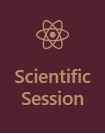The Effect of Indirect Pulp Capping Treatment on Oral Health Quality of Life at The Dental Hospital Universitas Muhammadiyah Yogyakarta
DOI:
https://doi.org/10.18196/imunity.v1i1.17Keywords:
indirect pulp capping treatment, quality of life, dental and oral healthAbstract
Background: Dental and oral health-related quality of life is an individual's assessment of the impact of oral disorders that can affect the overall quality and well-being of their lives. One of the oral disorders that is frequently experienced by the community is pulpitis, which, if left behind, can cause pain and cause the tooth to become necrotic. Indirect pulp treatment can be done to deal with pulpitis and improve the patient quality of life. The study aims to determine the impact of indirect pulp capping treatment on quality of life based on gender, age, educational level, and number of teeth treated. Methods: The data collection technique in this study uses primary data in the form of a questionnaire and secondary data, which is data from the medical records of patients performing pulp capping treatment. The sample in this study is a patient who has completed indirect pulp capping treatment in the dental hospital UMY. The data analysis used in this study is descriptive analysis as well as chi square tests and controls to test the hypothesis. The results of this study are patient gender, the education level, and the number of teeth treated have no influence on quality of life related to oral health (p>0.05) otherwise the patient age has an influence on quality of life related to oral health (p<0.05). Conclusion: Gender, education level, and number of teeth treated have no influence, while age has an influence on quality of life
References
Mashoto, Kijakazi O. (2010). Socio-demographic disparity in oral health among the poor: a cross sectional study of early adolescents in Kilwa district, Tanzania. BMC Oral Health, vol. 10, no. 7.
Wintarsih, O, (2009). Kebocoran apikal pada irigasi dengan EDTA lebih kecil dibandingkan yang tanpa EDTA (A comparative study of apical leakage on irrigation using and without EDTA). Jurnal PDGI, vol. 58(2), pp. 14-19.
Goldberg. M., (2020). Indirect and Direct Pulp Capping: Reactionary vs. Reparative Dentins. JSM Dentistry, vol. 8, no. 1, pp. 1-6.
Widodo. T. (2005). Respons imun humoral pada pulpitis. Maj. Ked. Gigi. (Dent. J.), vol. 38, no. 2, pp. 49-51.
Montero J., Lorenzo B., Barrios R., Albaladejo A., Canelo J. A. M., Valverde L.A. (2015). Patient-centered Outcomes of Root Canal Treatment: A Cohort Follow-up Study. Jurnal of Endodontik, vol. 41, no. 9, pp. 1-6.
Bhaisare D. A. (2017). Evaluation of Oral Health Related Quality of Life and Satisfaction Outcome of Endodontic Treatment in Central India –a Cross Sectional Study," IOSR Journal of Dental and Medical Sciences (IOSR-JDMS), vol. 16, no. 6.
Bennadi D., Reddy C. V. K. (2013). Oral health related quality of life. Journal of International Society of Preventive and Community Dentistry. vol. 3, no. 1., pp. 1-6.
Alzoubi E.E., Attard.N.J. (2017). Oral Health Related Quality of Life Impact in Dentistry," Research & Reviews: Journal of Dental Sciences, vol. 5, no. 2, pp. 35-42.
Sischo L., Brode.H. (2011). Oral Health-related Quality of Life: What, Why, How, and Future Implications," J Dent Res, vol. 90, no. 11, pp. 1264-1270.
Budiarti R. (2013). Kesehatan Gigi pada Masyarakat Muslim, vol. 1, Pustaka Aura Semesta. pp. 9-10.
Montero J. (2009). Validation the Oral Health Impact Profile (OHIP-14sp) for adults in Spain. Med Oral Patol Oral Cir Bucal, vol. 14, no. 1, pp. E44-50.
Soeprapto A. (2017) Pedoman Dan Tatalaksana Praktik Kedokteran Gigi, vol. 2, Y. E. Wijaya, Ed., Yogyakarta: STPI Bina Insan Mulia. p.63.
Alex G. (2018). Direct and Indirect Pulp Capping: A Brief History, Material Innovations, and Clinical Case Report. The Compendium of continuing education in dentistry, vol. 39, no. 3, pp. 182-189.
Hilton T.J. (2009). Keys to Clinical Success with Pulp Capping: A Review of the Literature. Operative Dentistry, vol. 34, no. 5, pp. 615-625.
Rukmo M. (2011). Perkembangan Metode Penilaian Kesembuhan Penyakit Periapikal Setelah Perawatan Endodontik. Kongres IKORGI ke IX dan Seminar Ilmiah Nasional Recent advances in Conservative Dentistry.
Puspita, S., Aristiyanto, R., Anggraini, L. D., & Nabilah, H. (2023). The Success of Final Restoration in Indirect Pulp Capping on Oral Health-Related Quality of Life. Insisiva Dental Journal: Majalah Kedokteran Gigi Insisiva, 12(1), 34-39..
Puspita, S., Burhani, C.M.D. (2019). Perbedaan Kekuatan Tarik Antara Semen Ionomer Kaca Modifikasi Resin dengan Mineral Trioxide Aggregate sebagai Bahan Kaping Pulpa. Insisiva Dental Journal: Majalah Kedokteran Gigi Insisiva, 2019, 8.1: 15-1.
Susra, W., Nur, D. L., & Puspita, S. (2013). Perbedaan kekuatan geser dan kekuatan tarik pada restorasi resin komposit microhybrid dengan bonding generasi V dan bonding generasi VII. Insisiva Dental Journal: Majalah Kedokteran Gigi Insisiva, 2(2), 69-76.







